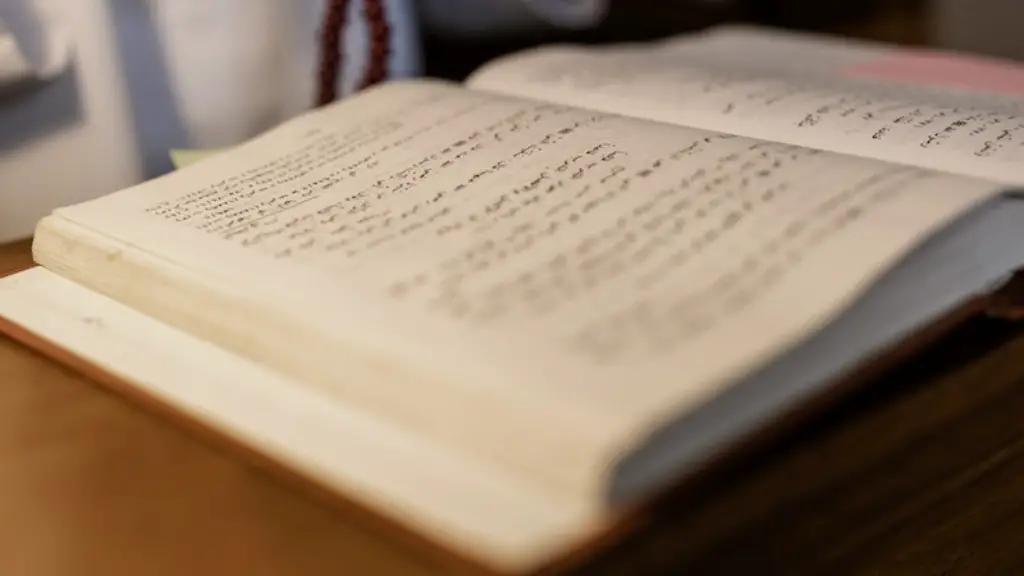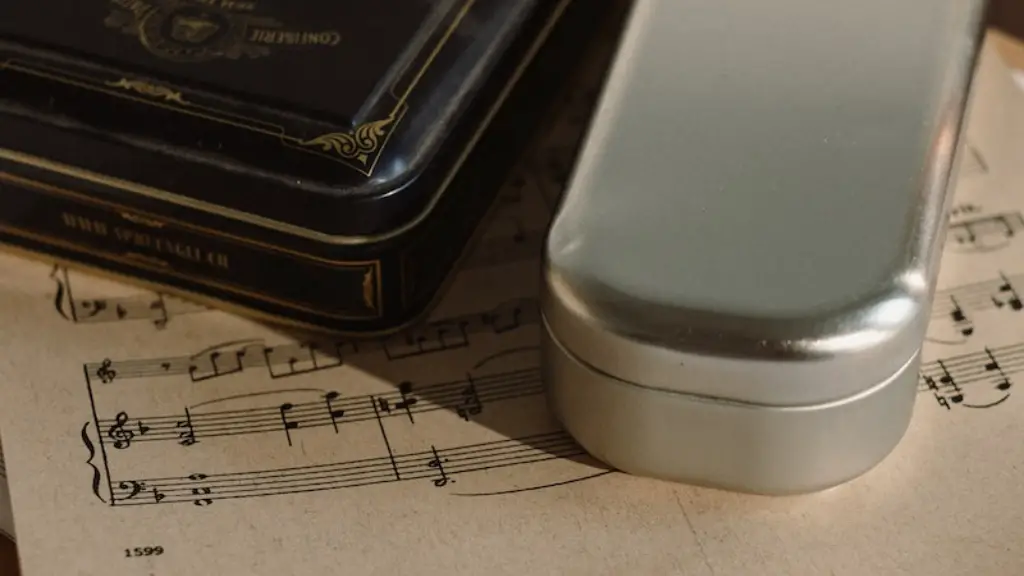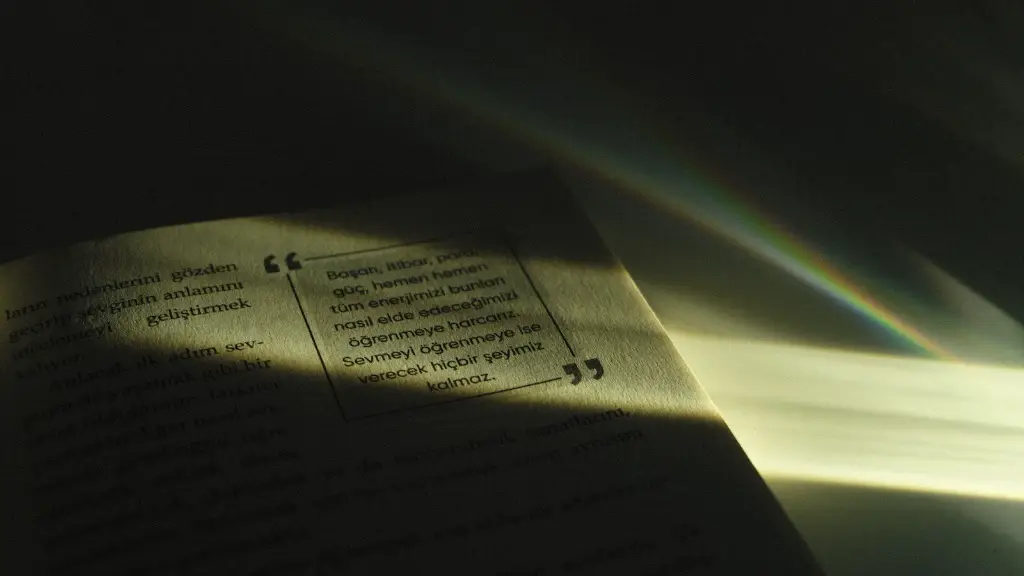Emily Dickinson is one of the most important writers of the 19th century. She’s known for her unusual and often cryptic poetry, which was published posthumously. Many of her poems deal with themes of death and mortality.
It’s not entirely clear why Dickinson started writing poetry, but it seems that she was driven by a compulsion to express her innermost thoughts and feelings. She was a very private person, and her poetry was her way of communicating with the world.
Dickinson’s poetry is unique and intensely personal. It’s been said that she created her own form of poetry, and her work has influenced many other writers.
The reasons why Emily Dickinson started writing poetry are unknown. It is speculated that she began writing poetry as a way to express her inner thoughts and feelings. She may have also started writing poetry as a form of self-therapy or as a means of communicating with the outside world.
What inspired Emily Dickinson poems?
Dickinson’s poetry was heavily influenced by her reading of the Book of Revelation and her upbringing in a Puritan New England town, which encouraged a Calvinist, orthodox, and conservative approach to Christianity. Additionally, the Metaphysical poets of seventeenth-century England had a significant impact on Dickinson’s work. These poets often employed unconventional imagery and symbolism in their writing, which is evident in Dickinson’s poems.
Emily Dickinson was a keen observer, and she used images from nature, religion, law, music, commerce, medicine, fashion, and domestic activities to probe universal themes. She was particularly interested in the wonders of nature, the identity of the self, death and immortality, and love. Her poetry is characterized by its concise and often enigmatic lyrics, as well as by her use of slant rhyme and unconventional capitalization.
How did Emily Dickinson get into poetry
Dickinson was part of a reading group in Amherst that read Shakespeare aloud. She was also introduced to Emerson’s work by his first book of poems, which was given to her by her early mentor Benjamin Franklin Newton.
Emily Dickinson was an American poet who wrote about a wide range of topics including emotions, nature, death, and love. Though she was not widely published during her lifetime, her poems have since become some of the most well-loved and influential works in American literature. Dickinson’s poems often explore the darker side of human experience, dealing with topics like loneliness, pain, and death. But she also wrote about more uplifting themes like happiness, love, and nature. In all her poems, Dickinson sought to capture the profound emotions and experiences that make up the human condition.
What are 3 interesting facts about Emily Dickinson?
Emily Dickinson was one of the most prolific and renowned poets of her time. Although only ten of her poems were published during her lifetime, her work is still highly celebrated today. Dickinson was born into a prominent family in Massachusetts and her father was a United States Senator. The Dickinsons were devout Calvinists and Emily was raised with strict religious values. However, she would later develop her own unique views on spirituality and religion. Botany was one of her great passions in her early years and she was known for her vast knowledge of plant life. As she grew older, Emily became increasingly reclusive and seldom left her home. It is believed that she had several mysterious love affairs throughout her life, although none of these relationships were ever confirmed. Emily Dickinson was a complex and fascinating woman who left a lasting legacy through her poetry.
Dickinson lived a very isolated life and was considered an eccentric by her locals. She was known for her white clothing and her reluctance to greet guests or even leave her bedroom.
Why did Emily Dickinson write so much about death?
Dickinson’s spiritual background is indicated by her religious beliefs, which form the basis of her preoccupation with death. Although Dickinson is a religious person who believes in the inevitability of death and afterlife, she is a non-conformist as she is skeptical and curious about the nature of death. This curiosity is evident in her poetry, which often explores death and the afterlife from a personal perspective. In her poetry, Dickinson challenges the traditional Christian beliefs about death and the afterlife, and offers her own unique insights into these topics.
Over the course of her lifetime, Emily Dickinson wrote hundreds of poems. However, the majority of her best-known and most beloved works were produced during a short but intense period of creativity that began in her teen years and lasted until her early 30s. This was a time when Dickinson truly came into her own as a poet, experimenting with new forms and styles and perfecting the unique voice that would make her one of the most important authors in American history. Even though she was largely unknown during her lifetime, the poems she composed during this period remain some of the most powerful and influential works of literature ever written.
What is the main theme of Emily Dickinson
Dickinson was certainly a different kind of poet compared to her contemporaries. She often tackled difficult subjects like death and love in her work, and she had a unique way of looking at the world around her. Scholars have long noted her difference from other poets of her era, and it is one of the things that makes her work so special.
Emily Dickinson’s poems often employ short stanzas, usually quatrains, with short lines. The poems usually rhyme on the second and fourth lines. Other stanzas occasionally employ triplets or pairs of couplets, and a few poems employ longer, looser, and more complicated stanzas.
Who is Emily in love with Dickinson?
The person who would become Emily Dickinson’s first love and greatest love was Susan Gilbert, an orphaned mathematician-in-training. They met when Emily was four months before her twentieth birthday, and Susan was nine days her junior.
“Emily Dickinson’s final words were very brief, but they carry a deep meaning. Dickinson was a very private person and didn’t want anyone to know she was sick. The fog represents the secrecy and isolation that she felt in her final days. Even though she was surrounded by family, she still felt alone. These words show that even in her last moments, Emily Dickinson was still thinking about her art and her unique place in the world.
What is Emily Dickinson’s most famous quote
Our hope is like a bird that never stops singing. It’s always there in the depths of our soul, reminding us that everything will be alright. No matter what happens in life, we must never lose hope.
Emily Dickinson lived in an age where there was a lot of struggle to reconcile traditional Christian beliefs with newly emerging scientific concepts. The most influential scientific concept during her time was Darwinism. Because of this, Dickinson’s struggles with faith and doubt reflect her society’s diverse perceptions of God, nature, and humankind.
What was Dickinson’s writing style?
Emily Dickinson was a highly original poet who used unconventional elements in her writing to great effect. In addition to her use of vivid imagery and idiosyncratic vocabulary, she also made extensive use of dashes, dots, and unconventional capitalization. This helped give her poetry a highly distinctive style that has often been imitated but never really duplicated.
Emily Dickinson was an American poet who is best known for her use of slant-rhyme, conceits, and unconventional punctuation. She was part of a prominent Amherst, Massachusetts family and was known for her reclusive habits.
What literary elements did Emily Dickinson use
Dickinson’s poetic devices add ambiguity to her already uncertain subjects. By using imagery, enjambment, and dashes, she creates an even more uncertain meaning that can be interpreted in a number of ways. This allows readers to find their own personal meaning in her poetry, which is one of the reasons why her poetry is so popular.
If you were in Sue’s position, would you tell Emily about the engagement? Why or why not?
I believe that if Sue and Emily are truly best friends, she should tell Emily about the engagement. It would be difficult to keep something like that from your best friend and I’m sure Emily would be hurt if she found out from someone else. honesty is always the best policy, especially when it comes to your closest friends.
Final Words
There is no certain answer to this question, as Dickinson herself did not leave behind any clear explanation for why she began writing poetry. It is possible that she was simply drawn to the literary form as a means of self-expression, or that she was inspired by other poets she had read. Whatever the reason, Dickinson went on to become one of the most prolific and influential poets in American history.
In conclusion, Emily Dickinson started writing poetry because she was a very private person and found that she could express herself better through writing. She also enjoyed the process of creating poems and found it to be a way to relieve stress and anxiety.





